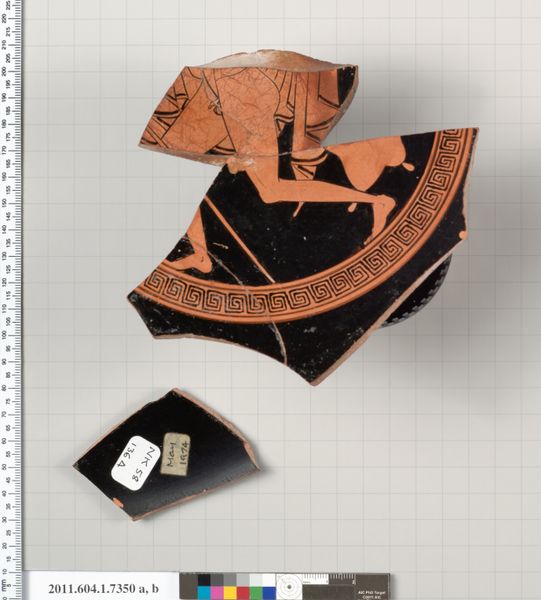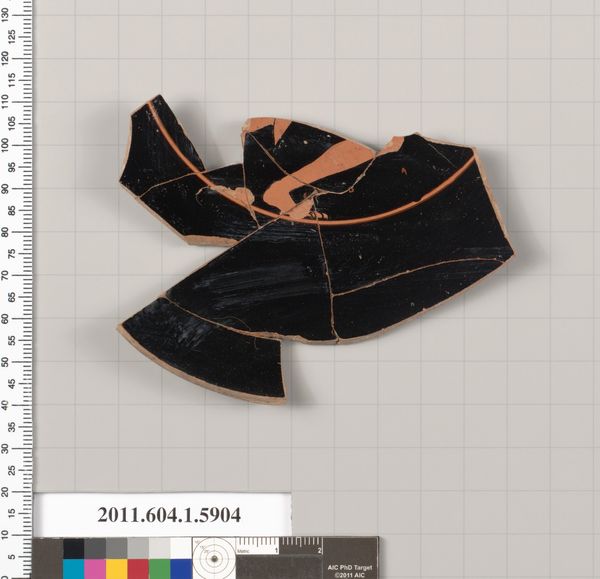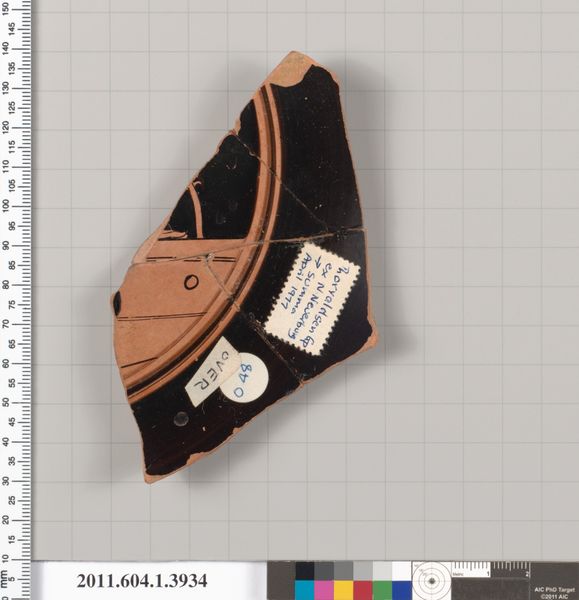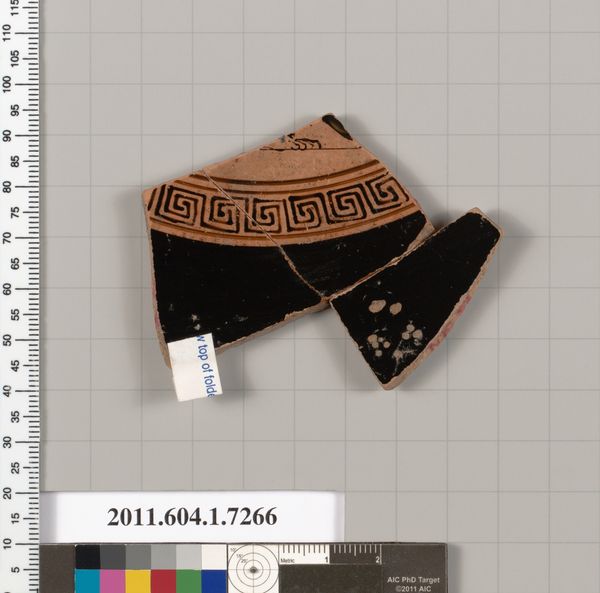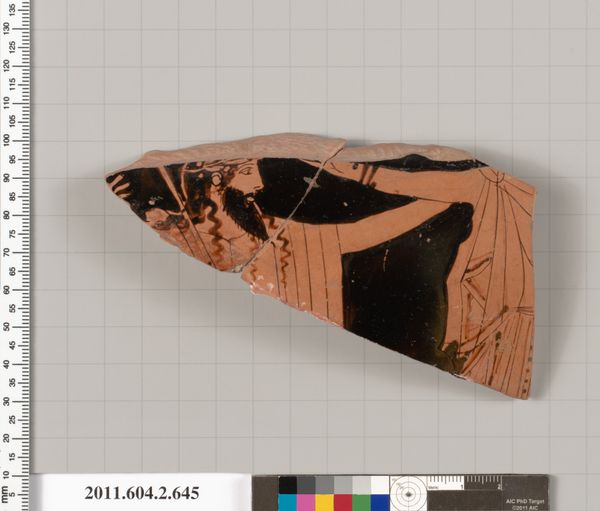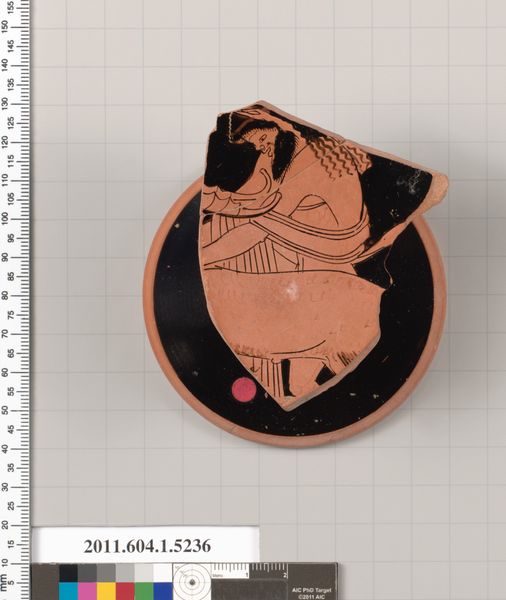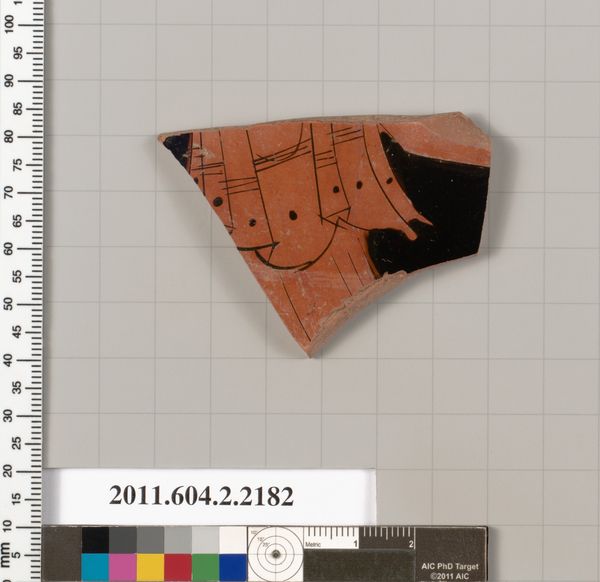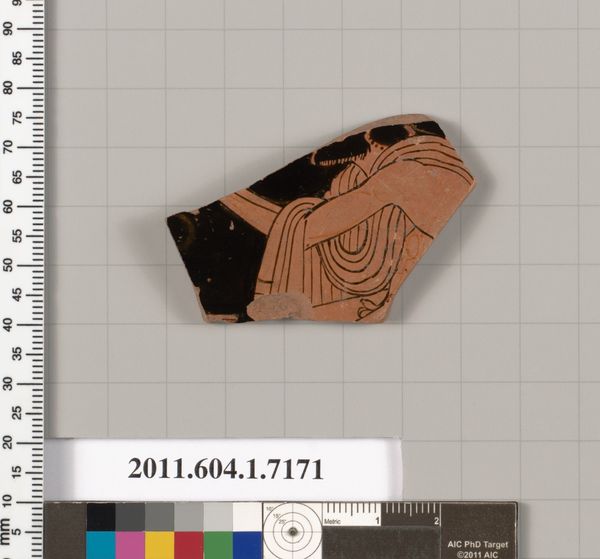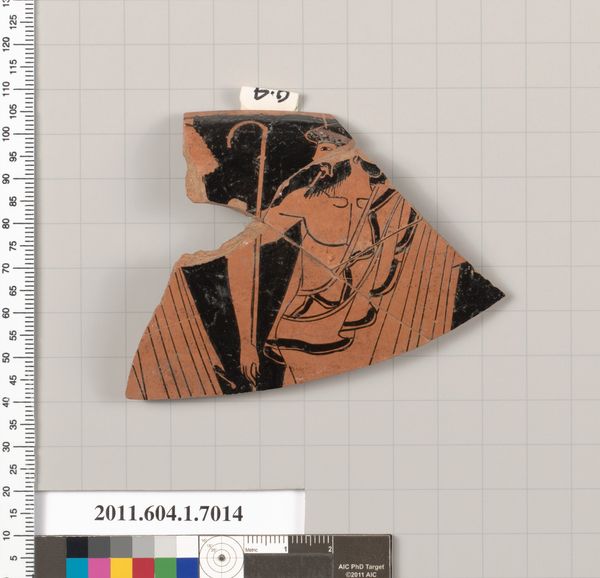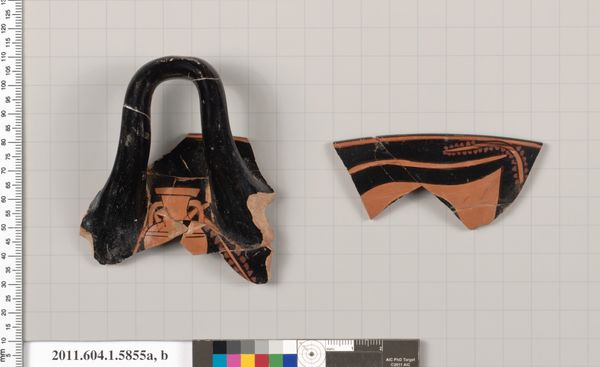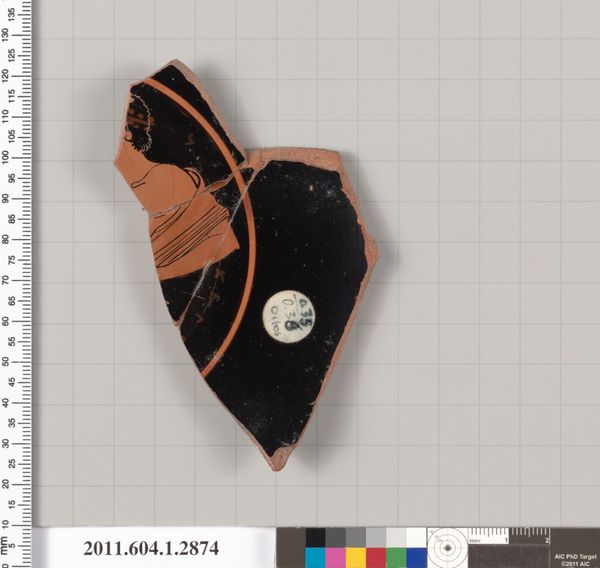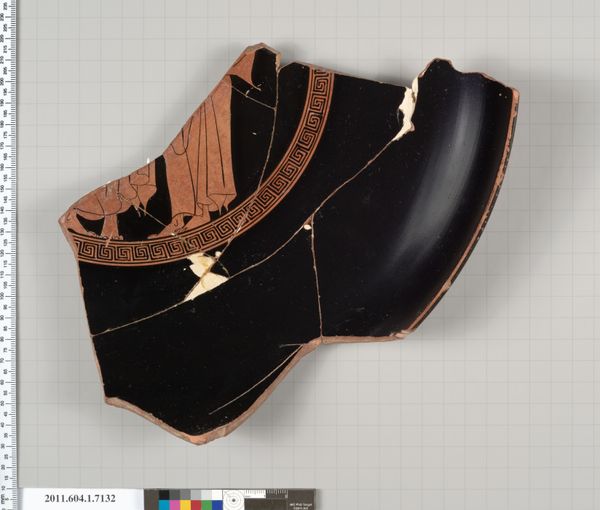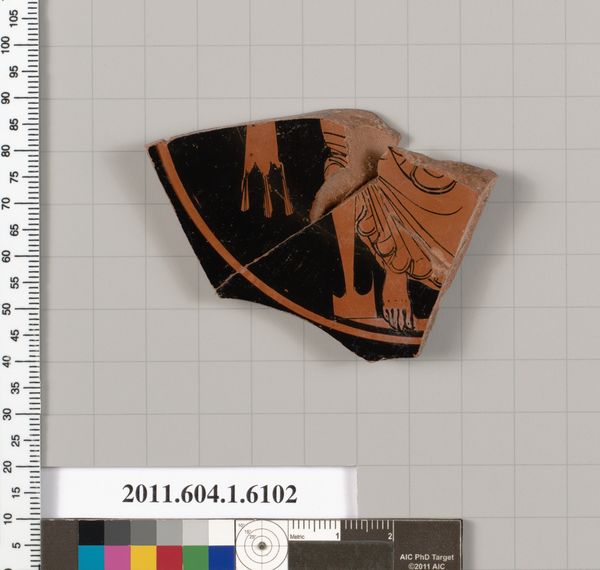
ceramic
#
greek-and-roman-art
#
ceramic
#
vase
#
figuration
#
roman-art
#
ancient-mediterranean
#
arch
#
history-painting
Dimensions: Height: 2 13/16 in. (7.1 cm)
Copyright: Public Domain
Editor: This is a terracotta fragment from a kylix, a drinking cup, created around 530 BC and attributed to Makron. The exposed terracotta and sharp black lines give it a raw, fragmented beauty. What symbolic narratives do you see within these surviving pieces? Curator: This fragment, though incomplete, whispers volumes about cultural memory and ritual. We see the echoes of symposium culture, of shared libations and narratives. Note the remnants of figuration – perhaps dancers or mythological figures – their forms delineated with precision. What do you think their gestures might have conveyed? Editor: Maybe gestures of celebration, considering it's a drinking cup? Or part of a narrative scene, like a story being told? Curator: Exactly! The images carry encoded stories. This work reveals not just artistic skill but also how stories were visualized and circulated. Even fragmented, they represent potent symbolism in collective identity. How do you feel that today these fractured symbols might affect our connection with the cultural practices of the time? Editor: It makes it more difficult but perhaps more intriguing. It invites you to reconstruct the scene and the stories for yourself. Curator: Precisely, the incomplete image demands the viewer to participate in the narrative, imbuing the fragment with new significance across time. We’re bridging millennia through interpretation. Editor: It’s remarkable how much history and art is condensed into these shards. Curator: And these are also reminders that our perception of history is itself a collection of fragments.
Comments
No comments
Be the first to comment and join the conversation on the ultimate creative platform.
